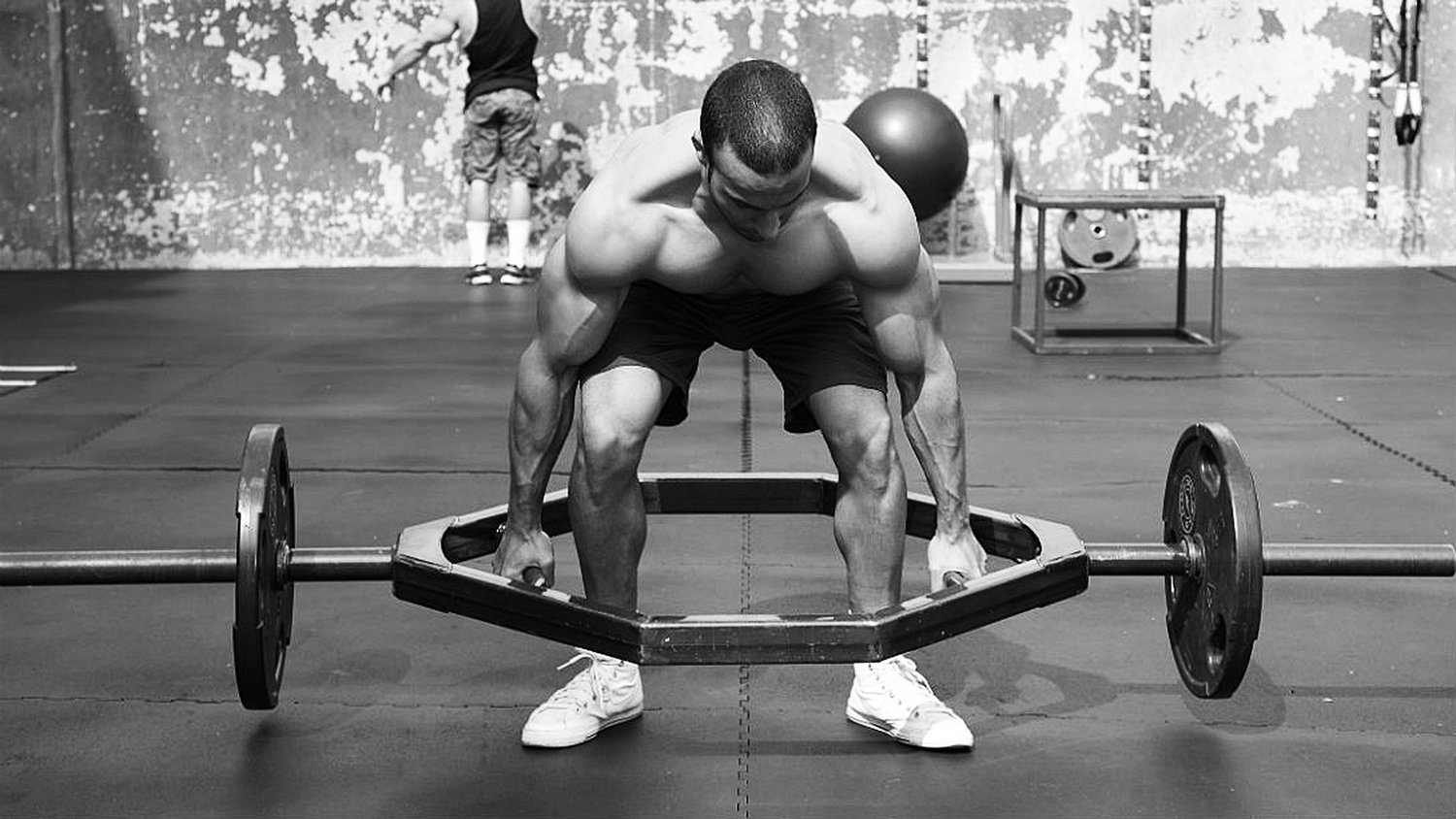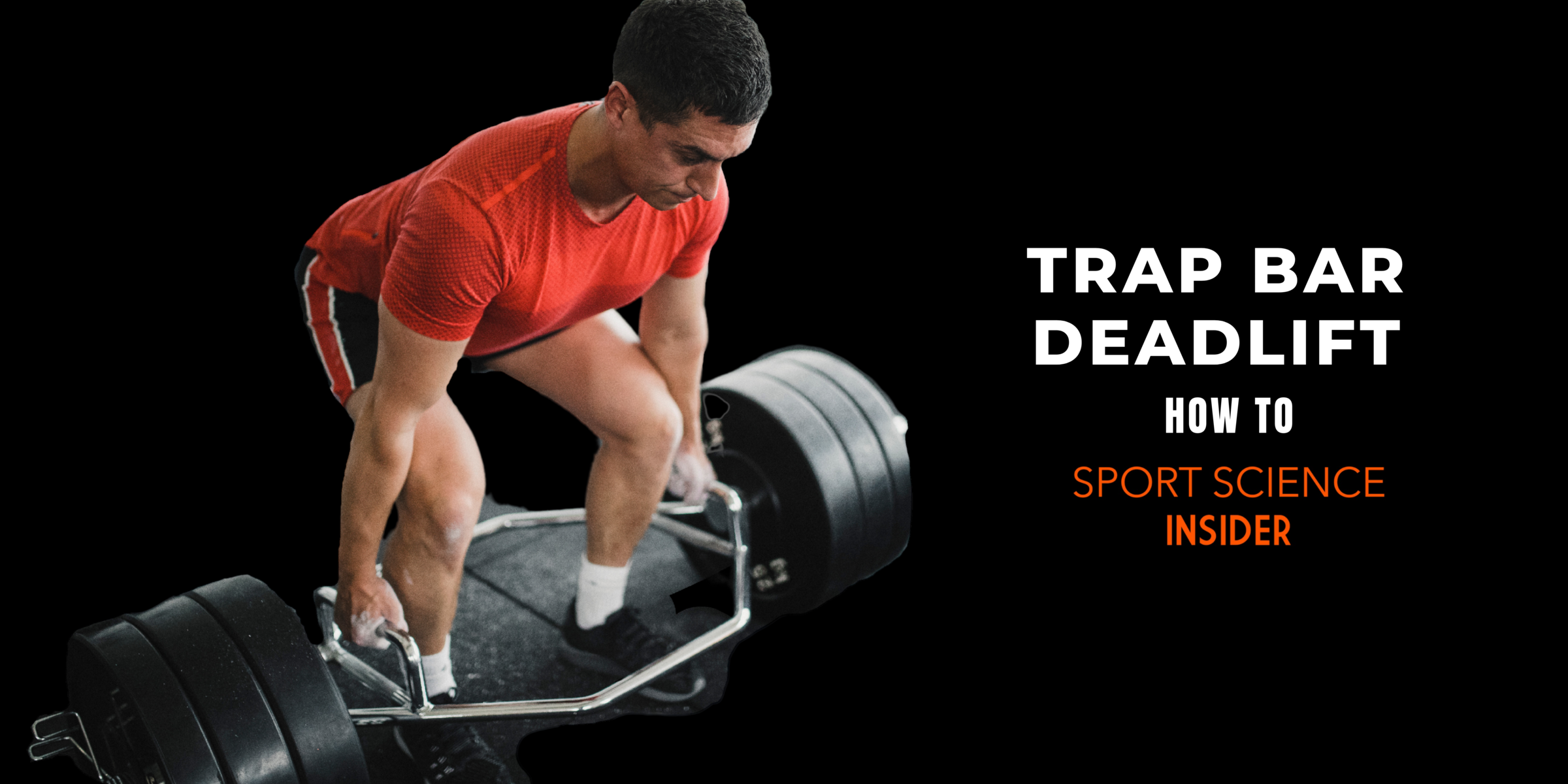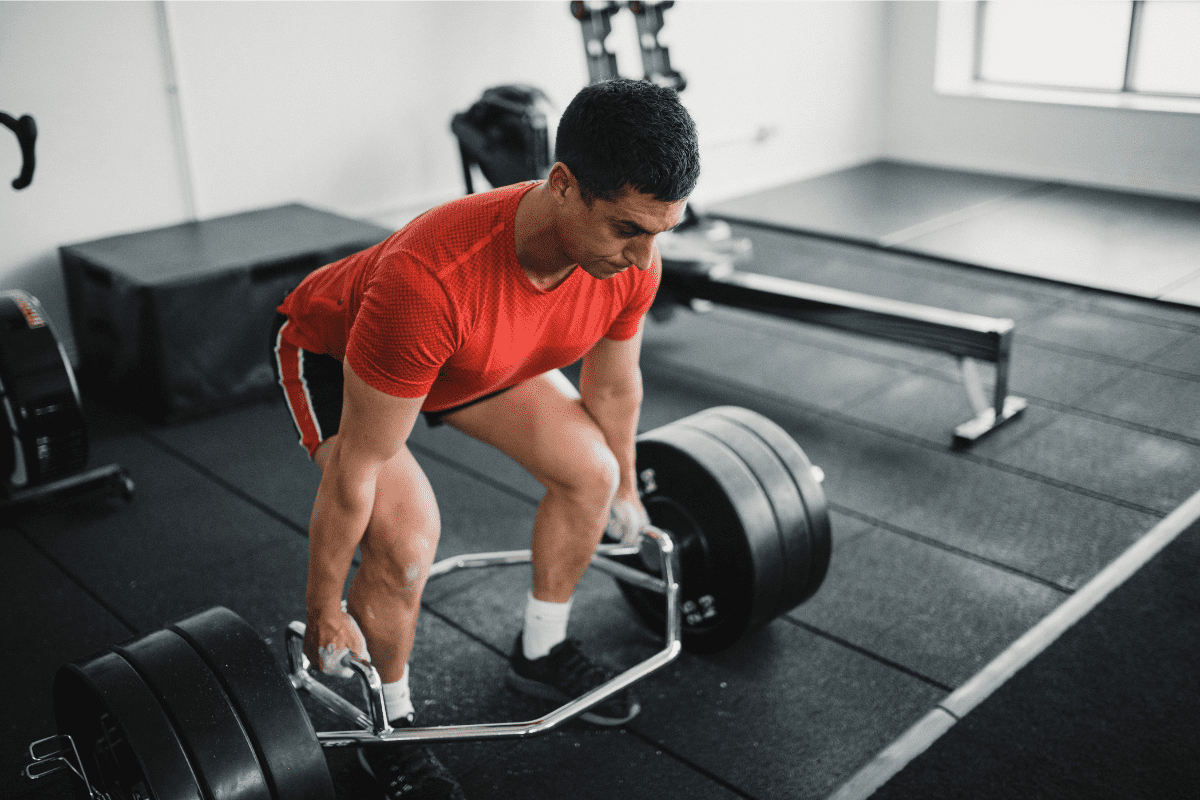Understanding Trap Bars: Basics and Terminologies
Welcome to the world of trap bars, a unique piece of gym equipment that has revolutionized weightlifting. Let’s start with the basics. A trap bar, also known as a hex bar, is a hexagonally shaped, weight plate loadable barbell. It’s a game-changer in the fitness industry, offering a safer and more efficient way to lift heavy weights.
Origin of the Trap Bar
The trap bar was designed by Al Gerard, a powerlifter who sought a safer alternative to traditional barbell lifts. The hexagonal design of the trap bar allows for a more neutral grip position, which can lead to a stronger grip on the bar. This design also prevents your body from getting in the way of the bar during lifts, making it a beneficial tool for beginners working on technique. For more on the history of the trap bar, check out Trap Bar Training.
Understanding Trap Bar Terminologies
When it comes to trap bars, there are a few key terms you should know. The “hex bar” is another name for the trap bar, deriving from its hexagonal shape. The “C-shaped bar” is a variation of the trap bar with a semi-circular design. The “trap bar deadlift” is a popular exercise performed with the trap bar, known for its focus on the glutes, hamstrings, and quads.

Trap Bar Weights
The weight of a trap bar can vary, but a typical trap bar weighs around 50 to 55 pounds. The weight capacity and durability of the finish are important considerations when purchasing a trap bar. For instance, the HulkFit Olympic 2-Inch Hex Weight Lifting Trap Bar, available on Amazon, is a highly rated option with a 4.6 out of 5 rating by 6444 reviewers.
Trap Bar Exercises
Trap bars are versatile and can be used for a variety of exercises. The trap bar deadlift is a favorite among fitness enthusiasts, allowing for heavy loading and fast movement. Trap bar squats are a great substitute for barbell back squats for those without a squat rack or poor upper body mobility. Trap bar farmer’s walks are a fantastic exercise for developing general strength.
Final Thoughts
In the realm of weightlifting, the trap bar is a game-changer. Its unique design and versatility make it a must-have for any gym-goer, from beginners to seasoned lifters. So, the next time you hit the gym, give the trap bar a try. You might just find it’s your new favorite piece of equipment.
Science Behind Trap Bar Weights
When it comes to the world of weightlifting, the trap bar, also known as a hex bar, is a game-changer. This unique piece of gym equipment, with its hexagonal frame, has revolutionized the way we lift weights. But have you ever wondered about the science behind trap bar weights? Let’s delve into it.
Factors Affecting Trap Bar Weight
The weight of a trap bar is not a random number. It depends on several factors such as size, design, and the material used. For instance, trap bars made with higher quality steel tend to weigh more. The handlebar size also plays a role in the overall weight of the trap bar.
Longer hex bars, designed for lifting heavier weights, naturally weigh more. On the other hand, C-shaped trap bars, which provide support from three of the four sides, weigh less than hexagon bars of the same dimension.
Types of Trap Bars
There are three main categories of trap bars: Gerard, conventional, and XL. The Gerard trap bar, named after its designer Al Gerard, weighs about 45 lbs and is beginner-friendly. The conventional trap bar, commonly used in gyms, weighs about 55 lbs. XL trap bars, designed for lifting heavier weights, weigh between 65-70 lbs.
Among the popular trap bars in the market is the Rogue TB-2 Trap Bar weighs 60 lbs, while an Al Gerard trap bar weighs about 45 lbs.
Myth 2: Trap Bars are Only for Beginners
Another common misconception is that trap bars are only for beginners. This couldn’t be further from the truth. While the Al Gerard trap bar is beginner-friendly, there are other types like the XL trap bars designed for lifting heavier weights. These are often preferred by advanced lifters.
Myth 3: Trap Bars are Lighter than Standard Barbells
Contrary to popular belief, trap bars are not lighter than standard barbells. In fact, they are heavier, increasing your weight-lifting capacity by about 10%.

This makes trap bars a safer and more efficient choice for weightlifting.
Myth 4: Trap Bars Limit the Amount of Weight You Can Lift
Some people believe that trap bars limit the amount of weight you can lift. This is a myth. The weight capacity of a trap bar depends on its design and quality. Heavy-duty trap bars have a higher weight capacity, while cheaper ones may not allow for more than 300 pounds.
Myth 5: Trap Bars are Only Good for Deadlifts
The final myth we need to debunk is that trap bars are only good for deadlifts. Yes, trap bars are great for deadlifts, but that’s not all they’re good for. They can also be used for exercises like shrugs, squat jumps, farmer walks, rows, and overhead presses.
Now that we’ve debunked these misconceptions, it’s clear that trap bars are versatile, adaptable, and suitable for all levels of fitness. They offer a safer and more efficient way to lift weights, making them a valuable addition to any workout routine.
So, the next time you hear someone spouting these myths, you’ll be armed with the facts. Remember, knowledge is power. And in this case, it can literally make you stronger. Happy lifting!
Benefits and Uses of Different Trap Bar Weights
Understanding the Versatility of Trap Bars
Trap bars, also known as hex bars, are not just for deadlifts. They are incredibly versatile, adaptable, and suitable for all fitness levels. They can be used for a variety of exercises, including shrugs, squat jumps, farmer walks, rows, and overhead presses.
Trap Bars for Different Fitness Levels
Contrary to popular belief, trap bars are not just for beginners. While the Al Gerard trap bar is beginner-friendly, there are other types like the XL trap bars designed for lifting heavier weights. These are often preferred by advanced lifters.
Trap Bars for Injury Mitigation
The hexagonal shape of the trap bar allows for a neutral grip, which is safer for the shoulders and biceps. Trap bar deadlifts with a neutral grip can prevent bicep tears and improve grip strength. This makes trap bars a safer and more efficient choice for weightlifting.
Trap Bars for Muscle Growth
Trap bar deadlifts allow for more weight to be lifted, leading to muscle growth and gains in other lifts. A study found that trap bar deadlifts result in greater peak force, velocity, and power compared to regular bar deadlifts.
Trap Bars for Improved Grip Strength
The trap bar is effective for working the trap muscles and offers more trap activation compared to a regular barbell. The trap bar improves grip strength and works the forearms.
Trap Bars for Versatile Exercises
The trap bar can be used for various exercises, including farmers’ walks and shrugs. For instance, the Rogue TB-2 Trap Bar is a recommended option for these exercises.

Trap Bars for Improved Posture
Trap bar deadlifts are great for improving posture and body alignment. They involve using your entire body and replicate motions found in daily life.
Trap Bars for Safer Weightlifting
Trap bars are safer and more convenient for heavy deadlifts. They allow for heavier weight lifting and improved technique. The exercise improves self-confidence and overall physical health.
Trap Bars for Those with Knee Issues
Trap bar deadlifts are suitable for those with knee issues. They put less stress on the biceps, elbows, and lumbar spine.
Trap Bars for Improved Explosive Power
Trap bar deadlifts can improve explosive power and vertical jump. They can also strengthen muscles in the upper body.
Trap Bars for Better Body Alignment
The hex design of the trap bar aligns the weight more with your center of gravity, reducing the risk of low-back pain.
Trap Bars for Easier Learning
The trap bar makes it easier to learn complex movements like the deadlift and squat.
Trap Bars for Versatile Workouts
Trap bar exercises are a great alternative to deadlifts and shrugs. They are versatile and can be tailored to fit different fitness goals.
In the end, the trap bar is a valuable addition to any workout routine. It offers a safer and more efficient way to lift weights, making it a must-have for both beginners and advanced lifters. So, the next time you hit the gym, don’t forget to include the trap bar in your workout. Happy lifting!
Maximizing the Potential of Trap Bars
When it comes to maximizing the potential of trap bars, there’s a lot to consider. From technique to specific exercises, a well-rounded approach can yield impressive results.
Master the Technique
Firstly, focus on technique. A strong initial drive is crucial for a successful trap bar deadlift. Stand dead center in the bar. This alignment is important for efficient angles. Drive your legs into the ground. This focus is key for a successful lift.
Optimize Your Stance
Next, consider your stance. A wider stance can be beneficial for trap bar deadlifts. It allows for greater quad involvement in the movement. But remember, setting your feet wider than for a normal deadlift is the trick.
Explore Different Exercises
Trap bars aren’t just for deadlifts. They can be used for a variety of exercises. Try floor press, Romanian deadlifts, overhead press, Pendlay rows, push-ups, inverted rows, and split squats. The trap bar is a natural fit for rear foot elevated split squats. It targets the glutes, hamstrings, and upper traps.
Consider the Weight
The weight of the trap bar matters.

Higher pick up position of the trap bar deadlift reduces the range of motion. This makes it easier to lift the same weight. But remember, trap bars have “low handles” at a standard bar height. They are not used as often, but can be beneficial.
Substitute with Dumbbells
Don’t have a trap bar? Don’t worry. Dumbbells can be a suitable substitute. They can be used for similar exercises if a trap bar is not available at the gym.
Stay Informed
Lastly, stay informed. There are articles and scholarly information available on trap bar weight and techniques. For instance, Rogue Fitness provides workouts, videos, expert guides, and deals for subscribers.
Remember, the trap bar is a versatile tool. It’s a valuable addition to any workout routine. It offers a safer and more efficient way to lift weights. It’s a must-have for both beginners and advanced lifters. So, the next time you hit the gym, don’t forget to include the trap bar in your workout. Happy lifting!
